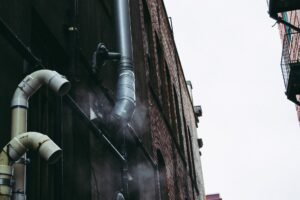Pipework Maintenance Best Practices
Pipework systems are the unsung heroes of many industrial and commercial processes, silently carrying fluids and gases to where they are needed. While these systems are designed to withstand rigorous conditions, proper maintenance is crucial to ensure their longevity and reliability. In this article, we will delve into the best practices for pipework maintenance, emphasizing proactive measures that can prevent issues and extend the life of the system.

Regular Inspections
Regular inspections are the cornerstone of effective pipework maintenance. Conducting thorough inspections at scheduled intervals allows operators to identify potential issues before they escalate. Inspectors should look for signs of corrosion, leaks, loose connections, and any visible damage to the pipes. Infrared thermography can be employed to detect variations in temperature, indicating potential problem areas that may not be visible to the naked eye.
Cleaning and Flushing
Over time, pipeworks can accumulate sediment, scale, and other debris that can impede the flow of fluids and contribute to corrosion. Regular cleaning and flushing are essential maintenance tasks to prevent these issues. High-pressure water or specialized cleaning solutions can be used to remove deposits and maintain optimal flow rates. This practice is particularly crucial in industries where the transported fluids may contain particles or corrosive elements.
Protective Coatings
Corrosion is one of the primary enemies of pipework systems, leading to structural degradation and leaks. Applying protective coatings to pipes can significantly extend their lifespan by creating a barrier between the metal and corrosive elements. The choice of coating depends on the specific environment and the materials used in the pipes. Regular inspections should include checks for coating integrity, and any damaged areas should be promptly addressed to prevent corrosion.
Leak Detection Systems
Implementing leak detection systems adds an extra layer of protection to pipework maintenance. These systems use sensors to identify even the smallest leaks in the system, providing early warnings before a minor issue escalates into a major problem. Timely detection allows maintenance teams to intervene proactively, minimizing the risk of damage and reducing downtime. In addition to traditional leak detection methods, advanced technologies such as acoustic and thermal imaging can enhance the accuracy of detection.
Valve and Fitting Checks
Valves and fittings play a critical role in controlling the flow of fluids within pipework systems. Regular checks of valves for proper operation and tight seals are essential to prevent leaks and ensure optimal performance. Lubrication of moving parts, such as valve stems and hinges, should be part of routine maintenance to prevent stiffness or corrosion that could impede functionality.
Documentation and Record-Keeping
Establishing a comprehensive documentation system is vital for effective pipework maintenance. Keep detailed records of inspections, repairs, and any modifications made to the system. This historical data serves as a valuable resource for identifying patterns, tracking the performance of specific components, and planning future maintenance activities. Additionally, it facilitates compliance with regulatory requirements and helps in troubleshooting recurring issues.
Education and Training
Well-trained maintenance teams are crucial for the successful implementation of pipework maintenance best practices. Provide ongoing education and training to ensure that maintenance personnel are equipped with the knowledge and skills needed to identify, address, and prevent issues effectively. This includes training on the use of advanced technologies, safety protocols, and adherence to industry standards.
Emergency Response Planning
Despite all preventive measures, unforeseen events can still occur. Establishing a robust emergency response plan is essential to minimize the impact of unexpected issues. This plan should include protocols for shutting down the system, contacting relevant authorities, and implementing temporary solutions until a more comprehensive repair can be conducted.
In conclusion, maintaining pipework systems involves a combination of regular inspections, proactive measures, and a commitment to ongoing education. By implementing these best practices, industries can ensure the longevity and reliability of their pipework infrastructure, reducing the risk of downtime, minimizing repair costs, and contributing to the overall efficiency of their operations. Pipework maintenance is not just about fixing issues when they arise; it’s about preventing them in the first place through a strategic and well-executed maintenance plan.

